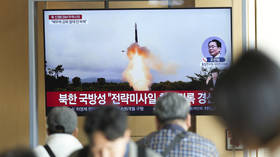Lessons from Xi Jinping’s India Visit

Chinese President Xi Jinping’s recent visit to India (September 17-19) yielded quite positive results, but, sadly, left much more in the “not achieved” bracket with both New Delhi and Beijing to blame for squandering away the opportunity.
When President Xi Jinping, who was on his first visit to India, met Indian Prime Minister Narendra Modi, the two strongmen had a great opportunity to put relations between Asia’s number one and number three economies in top gear. However, they failed to do so.
Though Xi’s India visit succeeded in Sino-Indian cooperation in a big way and in areas where such cooperation had traditionally been lacking, the issue of “border incursions” cast a dark and expansive cloud over the event. The Indian media was agog with anti-China reports and editorials – precisely the same kind of stuff that Xi wanted out of the window in Sino-Indian conversations for all time to come.
Let’s cut to the chase and see what else Xi and Modi could have
done and, more importantly, done differently in order to make the
meeting a historic landmark, which in any case was the objective
of both sides.
A fortnight before Xi set foot in India, Modi made a remark
during a trip to Japan: "Everywhere around us, we see an 18th
century expansionist mind-set: encroaching on other countries,
intruding in others' waters, invading other countries and
capturing territory.”
Though Indian Foreign Minister Sushma Swaraj did her best to downplay Modi’s statement saying that he had not named any country in particular, no one in China was fooled.
Beijing was outraged at Modi’s comment made from Japanese soil. I was wondering about the extent of the Chinese reaction and whether Xi would call off his India visit altogether; but he did not.
Then, from China’s perspective, India administered another pinprick to China days before Xi was to arrive. During a visit to Vietnam, Indian President Pranab Mukherjee’s signed a slew of agreements, including deals on defense cooperation and, also, one on oil exploration. One can argue that India is free to pursue its foreign policy independently with respect to China’s backyard countries just as China is free to chart its own course with respect to countries in India’s backyard. Perhaps the timing of India-Vietnam bonhomie was a little wrong from the Chinese view.
From the Indian point of view, New Delhi is doing nothing provocative and is only responding to the “string of pearls” strategy that China has been practicing vis-a-vis India for years. As part of this strategy, China has been making rapid and substantive forays into India’s backyard in countries like Bangladesh, Sri Lanka, Nepal and the Maldives – not to mention Pakistan, India’s biggest security concern.
Moreover, the Chinese side pushed the envelope rather too strongly on the issue of a boundary dispute. Xi was only the third Chinese President ever to undertake a visit to India for bilateral talks. Perhaps he could have been more cautious and temperate.
But unfortunately it was the first time when a Chinese “incursion” was launched into Indian-held territory even while the Chinese President was on Indian soil and was about to discuss serious issues with the top Indian leadership on ways to improve bilateral relations.
Expectedly, the Indian media latched onto the “incursions” reports, thus giving a negative twist to the India-China summit talks.
A host of concrete deliverables came off at the Xi-Modi summit. All these pointed toward just one direction: how India and China are going to cooperate meaningfully in diverse areas as ideal neighbors should. But the end result was well below expectations – and intentions – of either side.
This does not mean that Xi’s India visit was a fiasco. It wasn’t, by any stretch of the imagination. It was an important visit with substantive outcomes, but the two sides could have sweetened the deal further for each other if only they had shown a better give-and-take approach.
The crucial lesson learnt from Xi’s India visit is that like in all bilateral relations on the world stage - the main glue in India-China relations is trust and mutual respect to each other’s concerns.
This was sadly missing. And yet, it is always good to learn from one’s mistakes.
India and China are two contiguous nuclear-armed neighbors whose ties are perhaps among the most important bilateral relationships in the world. If they join hands and speak in one voice, the world will have no choice but listen to them.
Xi’s India visit has demonstrated political will on both sides to have a robust and meaningful partnership. It has also showed what the two sides must not do to each other for healthy bilateral relations.
The statements, views and opinions expressed in this column are solely those of the author and do not necessarily represent those of RT.
The statements, views and opinions expressed in this column are solely those of the author and do not necessarily represent those of RT.












